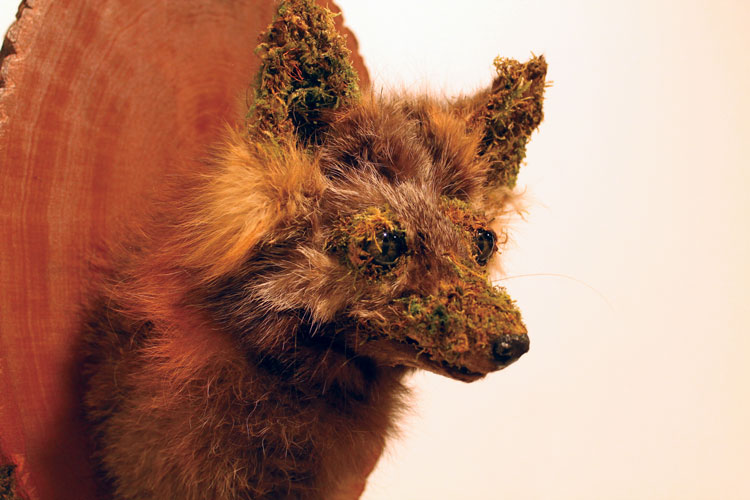An unusual art
It started as a quest for Stephanie Turner, associate English professor, to figure out why we’re fascinated by looking at non-human creatures.
Turner is the co-curator of the Foster Art Gallery exhibit “Animal Skins, Visual Surfaces” which is on display until Oct. 31.
The exhibit explores the many layers of taxidermy as museum objects, photographic subjects, sculptural interpretations and
cultural phenomenona.
Turner said the concept of the show is the idea of animal representation and asking: “What do we look at when we look at animals?’”
After writing on the subject, Turner knew she wanted to put together a show. She teamed up with Jyl Kelley from the art and design department to do so. The two, who co- curated the show, started work in
spring 2012.
“Jyl and I have had a great time putting this show together,” Turner said. “When this is over I am going to be so bummed out. Sixteen months of my life and now what?”
Together they wrote a faculty student collaborative grant to bring students on board for research positions. Students were also involved in writing the wall text for the exhibit and making graphic design pieces to promote the display.
“This is the best place to be: in an environment where people are open to new things and curious,” Turner said. “I just want to fill the gallery with students who want to interact in some way with this work. You can look at it from all sorts of
points of view.”
The show features a variety of taxidermy pieces as well as “rogue” taxidermy pieces, which use traditional techniques to create new interpretations on taxidermy.
“I’ve tried to put the show out there as having a little something for everyone,” Turner said.
Eau Claire Junior Claire Madden said she was intrigued by the exhibit’s uniqueness.
“It’s very strange, but interesting,” Madden said. “I would never think to make art out of taxidermy. Some of the pieces are kind of funny. I like it.”
Junior Pachia Her said the show is drawing students in. The exhibit opened Oct. 3, and over 20 students came through.
Her said her favorite piece comes from artist Brooke Weston — a deer named “Tommy” — but she also
appreciates the multimedia elements of the exhibit.
“The videos are interesting
because they tell you how taxidermy is done,” Her said. “It’s very unusual but I can see how it is art. The curators definitely did a little twist to it.”
The co-curators worked alongside Foster Art Gallery director Thomas Wagner, who Turner said has been helpful for things like multimedia elements.
“He anchors things from a business perspective. He has been really wonderful,” Turner said.






